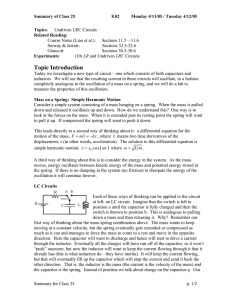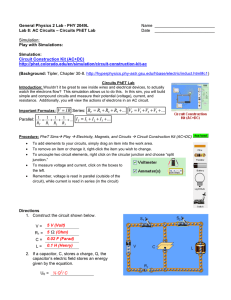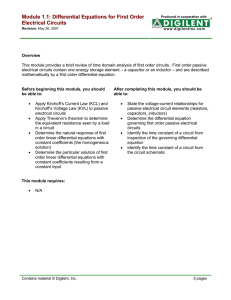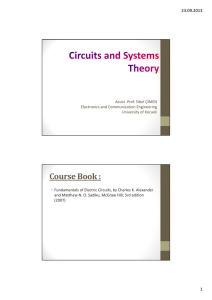Topic Introduction
advertisement
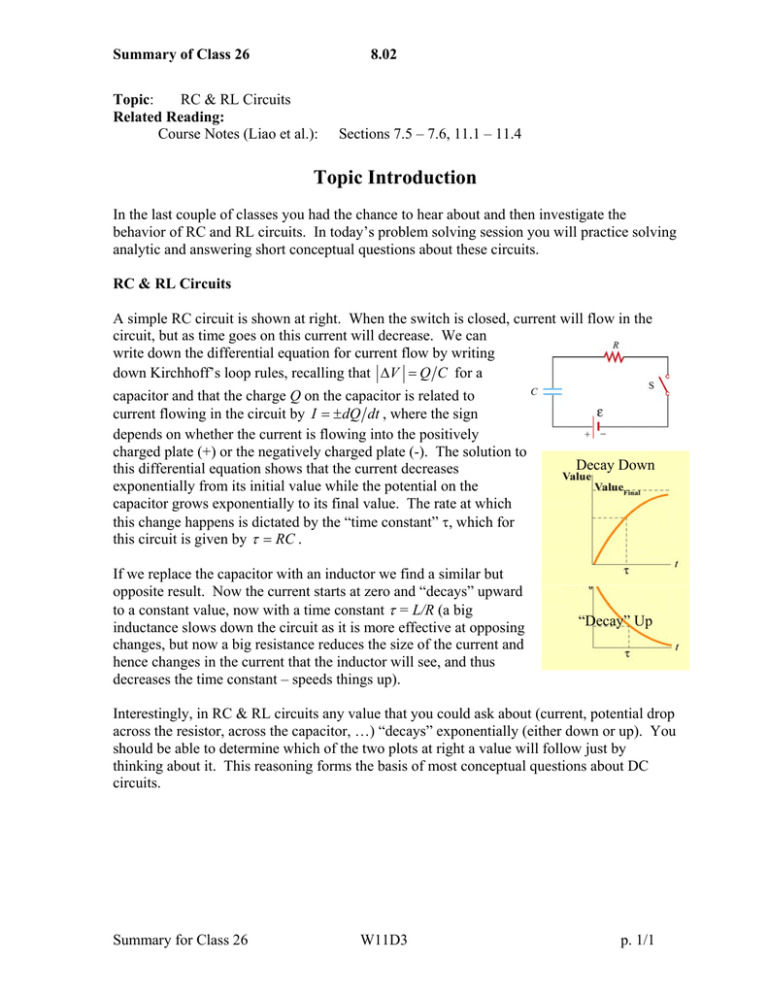
Summary of Class 26 8.02 Topic: RC & RL Circuits Related Reading: Course Notes (Liao et al.): Sections 7.5 – 7.6, 11.1 – 11.4 Topic Introduction In the last couple of classes you had the chance to hear about and then investigate the behavior of RC and RL circuits. In today’s problem solving session you will practice solving analytic and answering short conceptual questions about these circuits. RC & RL Circuits A simple RC circuit is shown at right. When the switch is closed, current will flow in the circuit, but as time goes on this current will decrease. We can write down the differential equation for current flow by writing down Kirchhoff’s loop rules, recalling that ∆V = Q C for a capacitor and that the charge Q on the capacitor is related to current flowing in the circuit by I = ±dQ dt , where the sign depends on whether the current is flowing into the positively charged plate (+) or the negatively charged plate (-). The solution to this differential equation shows that the current decreases exponentially from its initial value while the potential on the capacitor grows exponentially to its final value. The rate at which this change happens is dictated by the “time constant” τ, which for this circuit is given by τ = RC . Decay Down If we replace the capacitor with an inductor we find a similar but opposite result. Now the current starts at zero and “decays” upward to a constant value, now with a time constant τ = L/R (a big inductance slows down the circuit as it is more effective at opposing changes, but now a big resistance reduces the size of the current and hence changes in the current that the inductor will see, and thus decreases the time constant – speeds things up). “Decay” Up Interestingly, in RC & RL circuits any value that you could ask about (current, potential drop across the resistor, across the capacitor, …) “decays” exponentially (either down or up). You should be able to determine which of the two plots at right a value will follow just by thinking about it. This reasoning forms the basis of most conceptual questions about DC circuits. Summary for Class 26 W11D3 p. 1/1
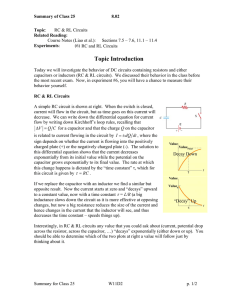


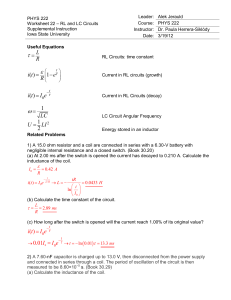
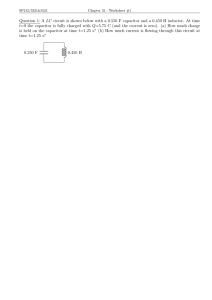
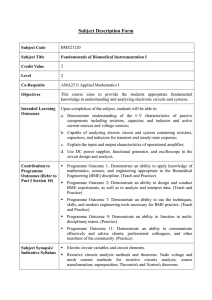

![Sample_hold[1]](http://s2.studylib.net/store/data/005360237_1-66a09447be9ffd6ace4f3f67c2fef5c7-300x300.png)
